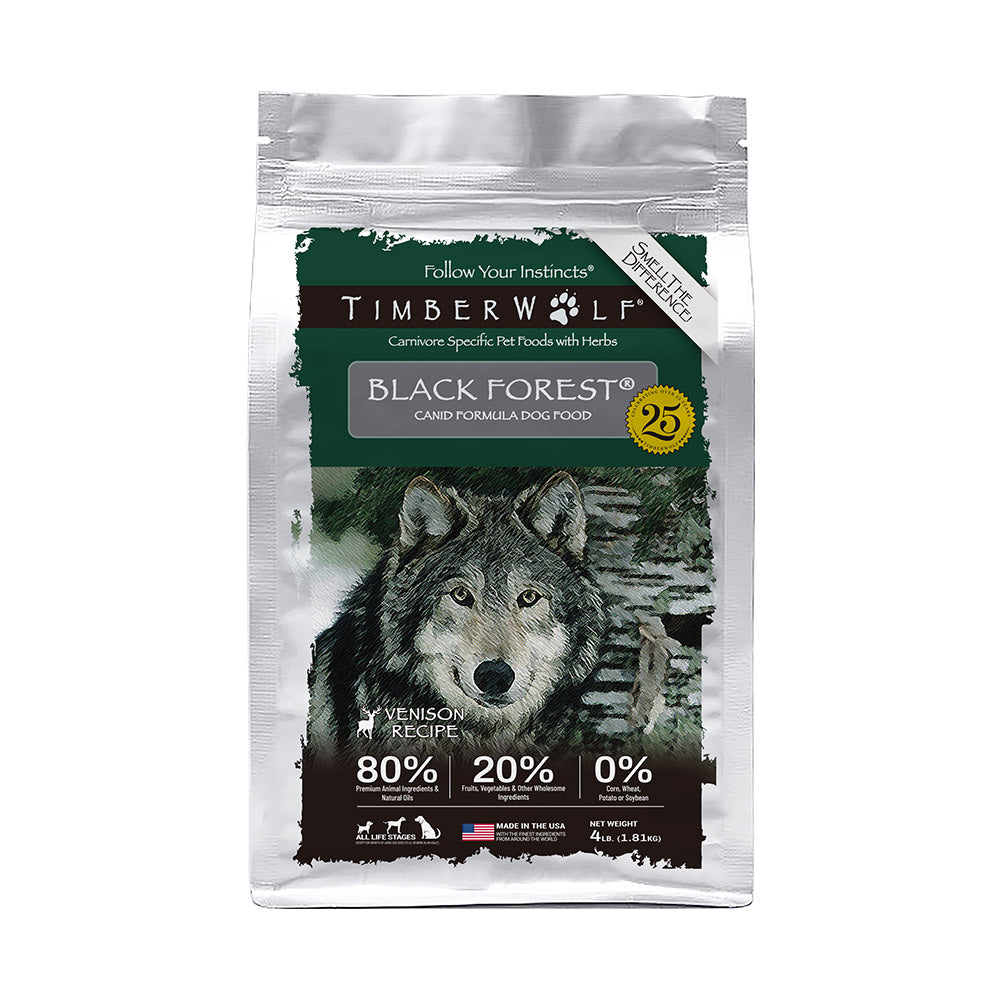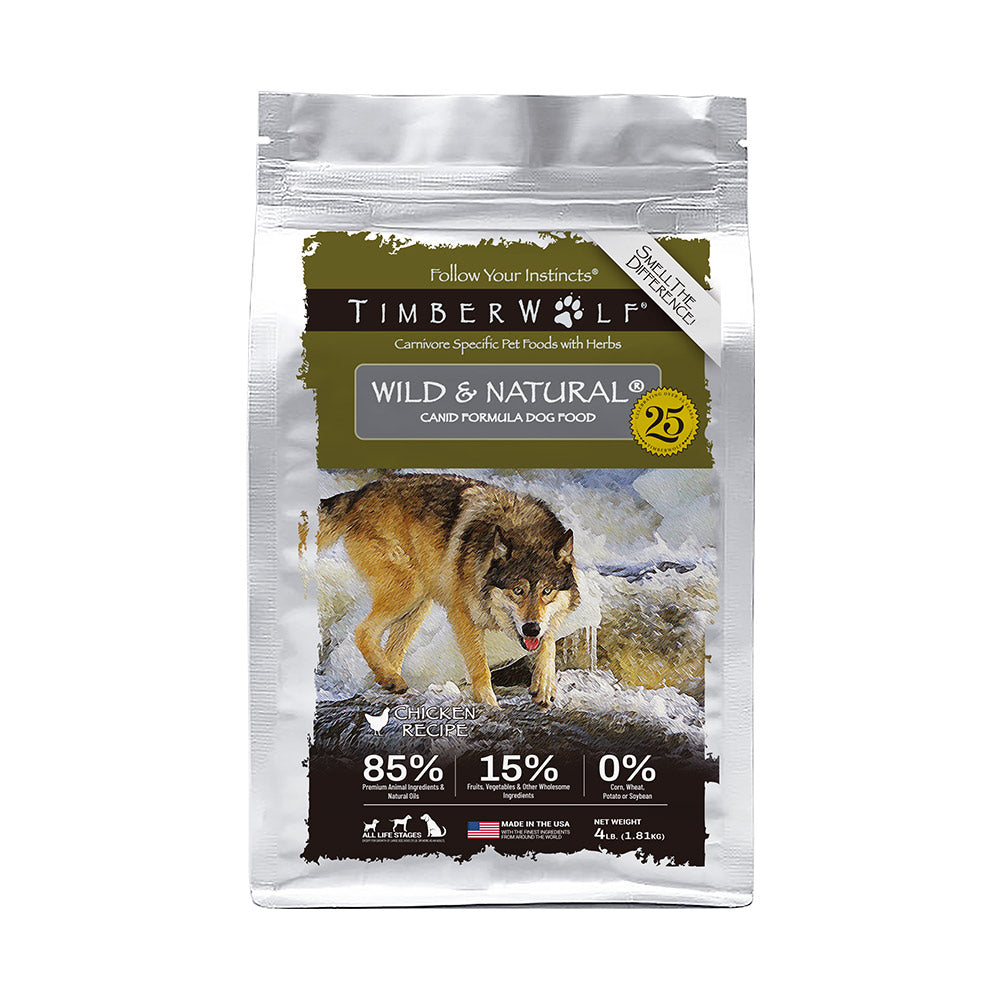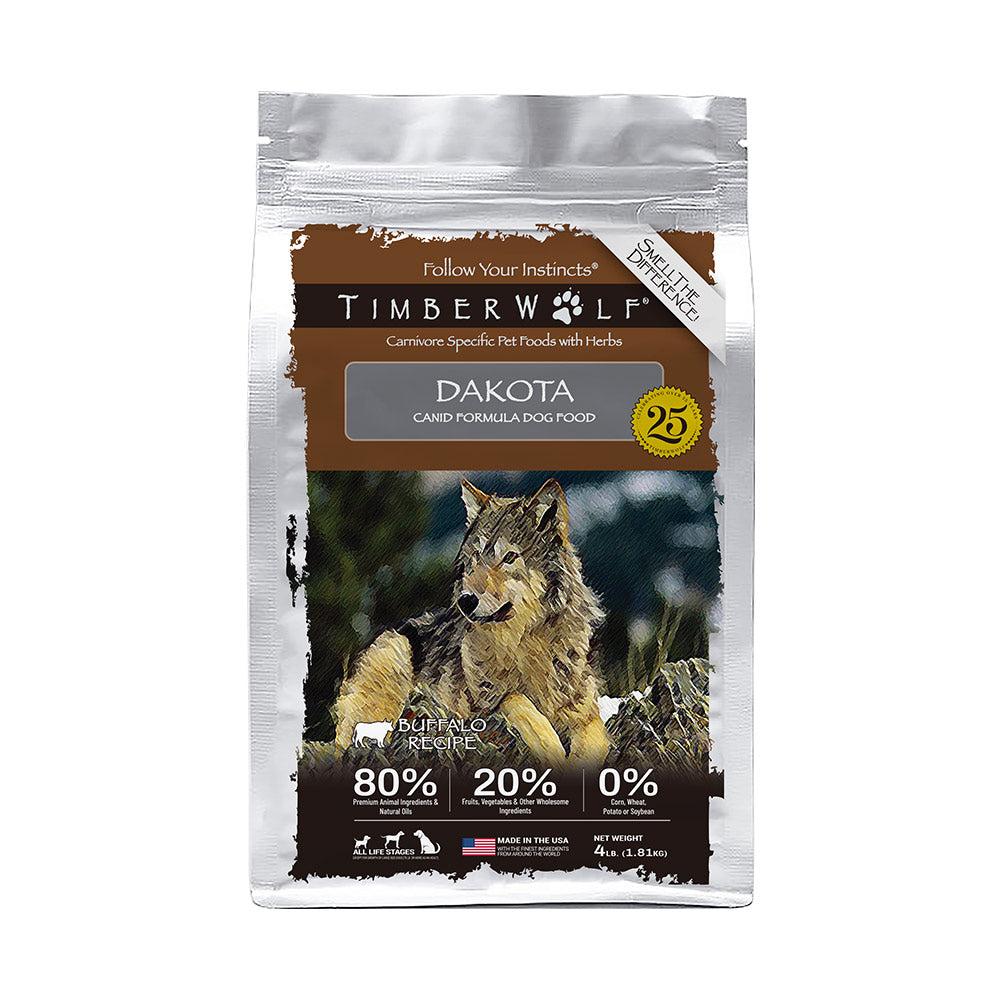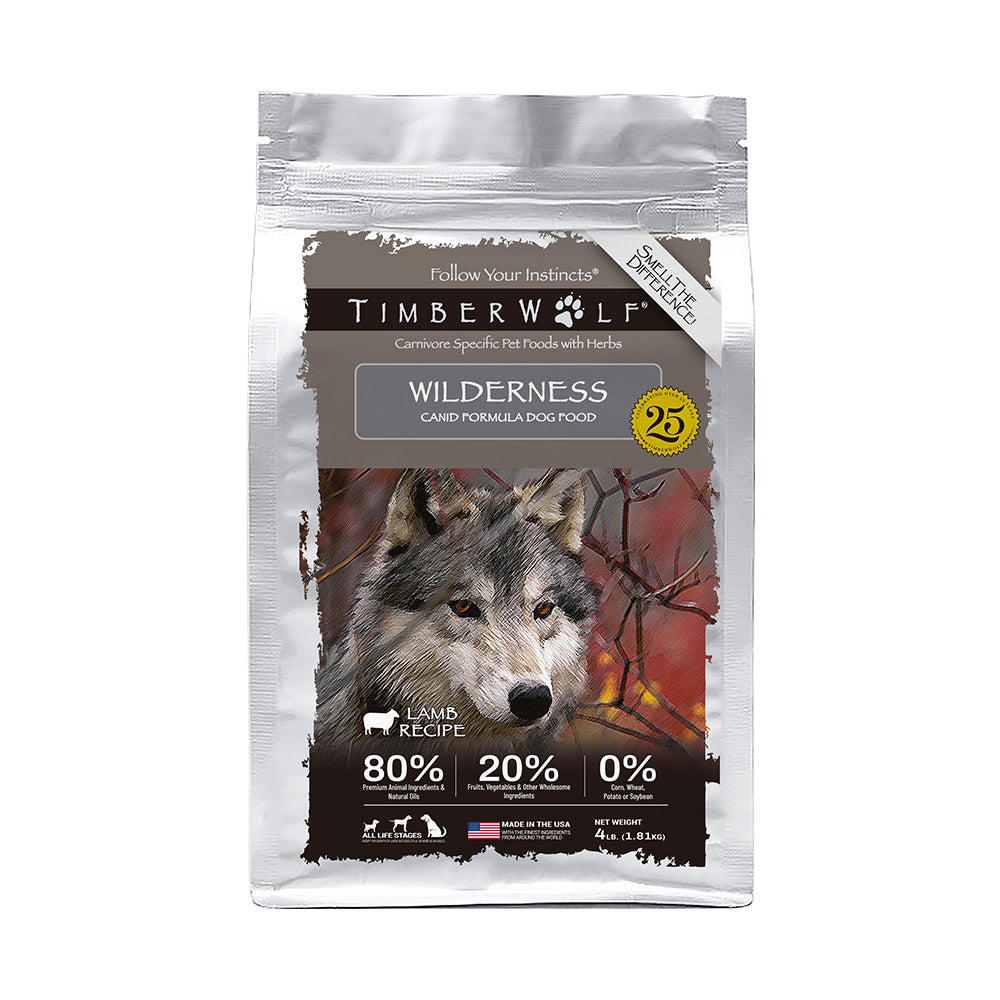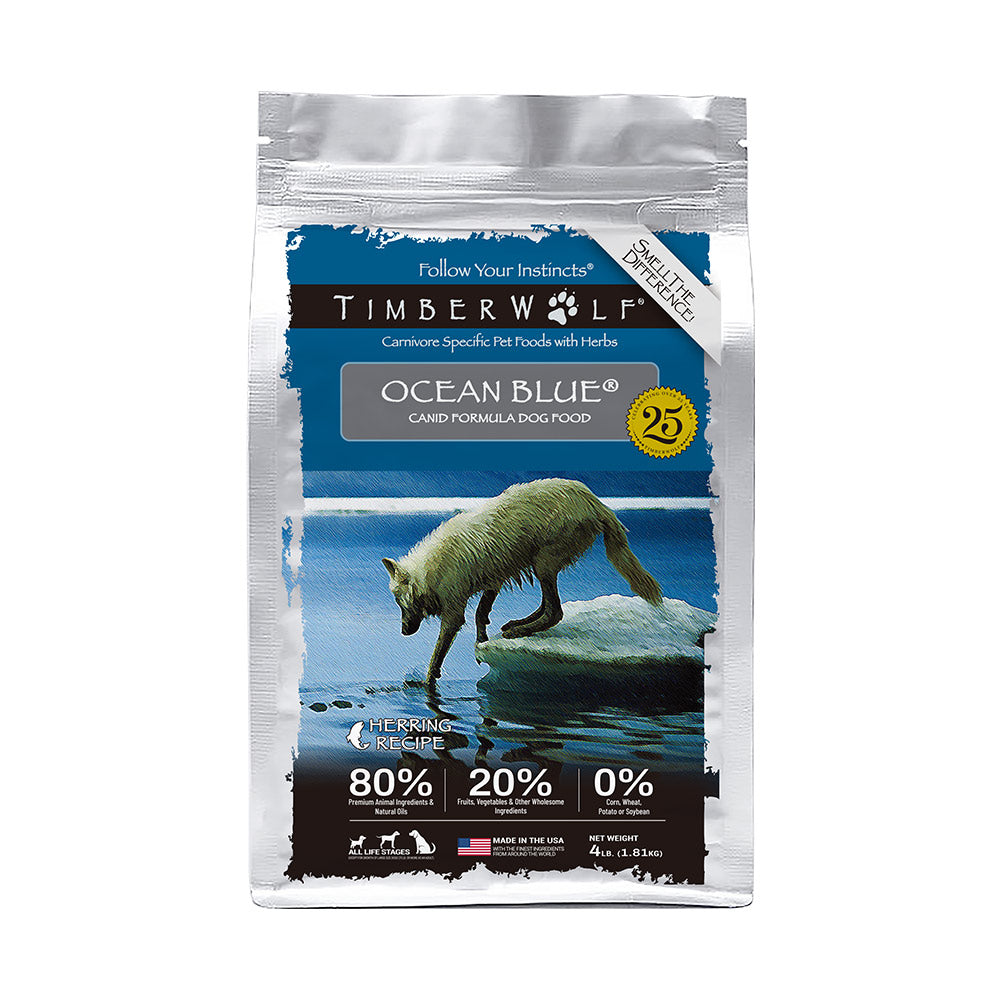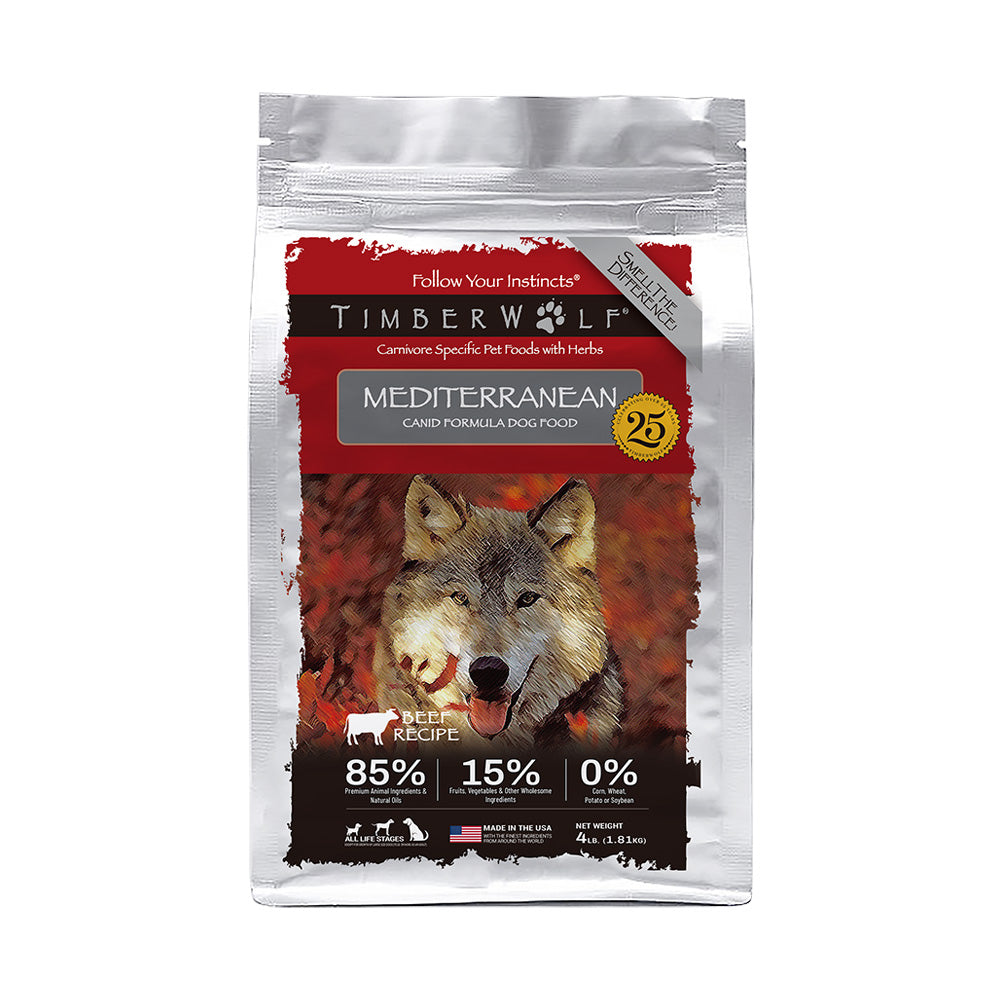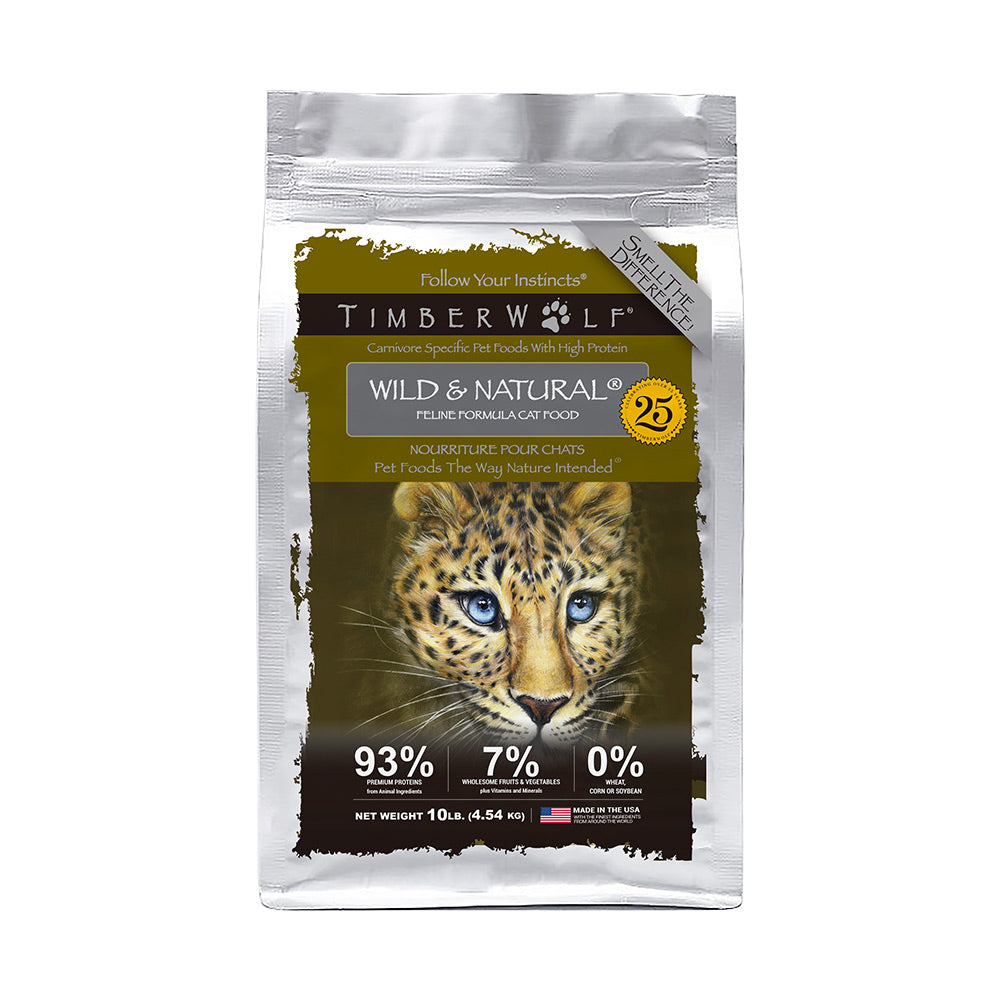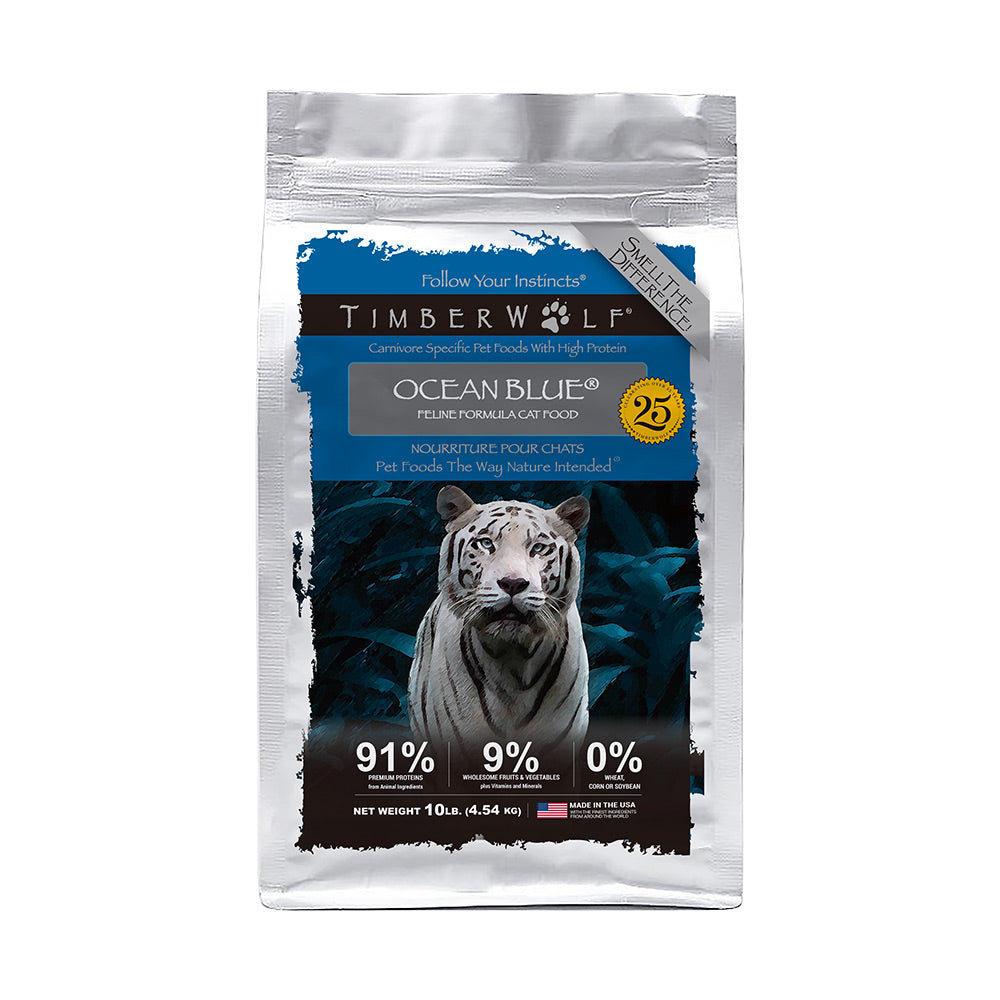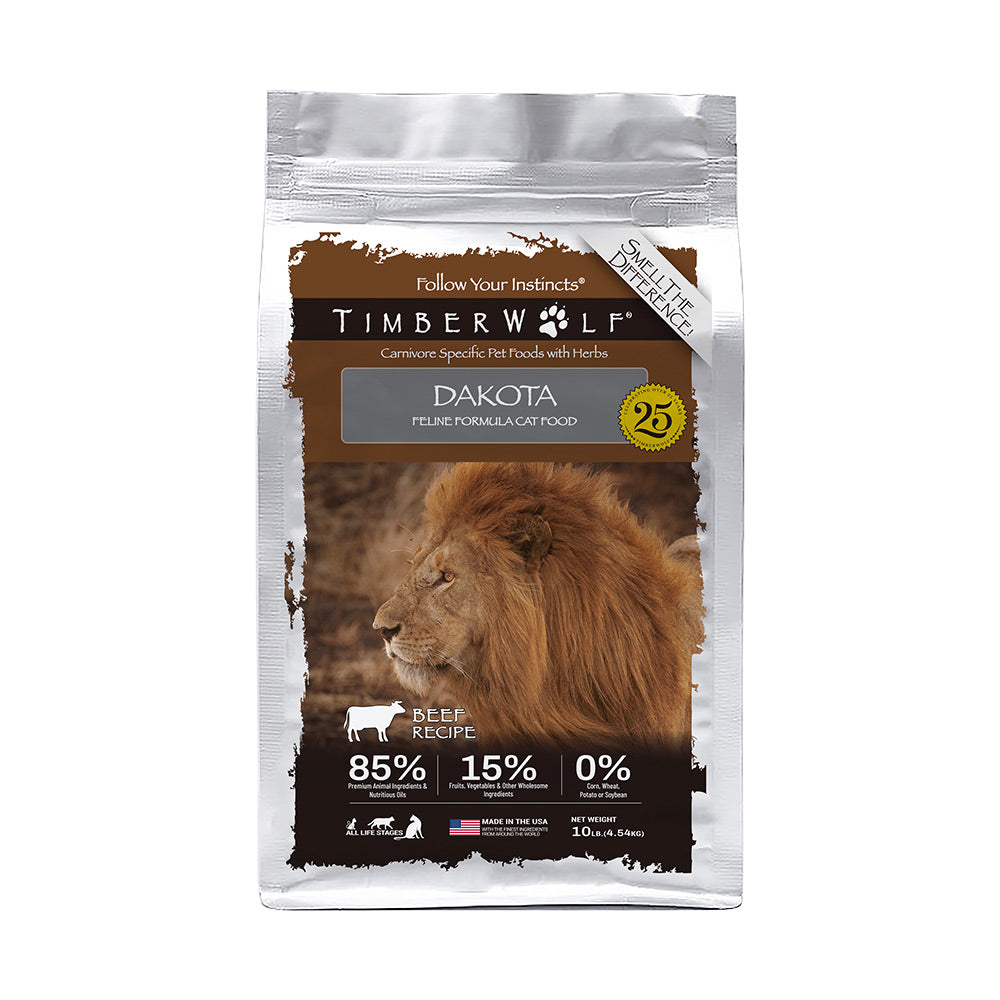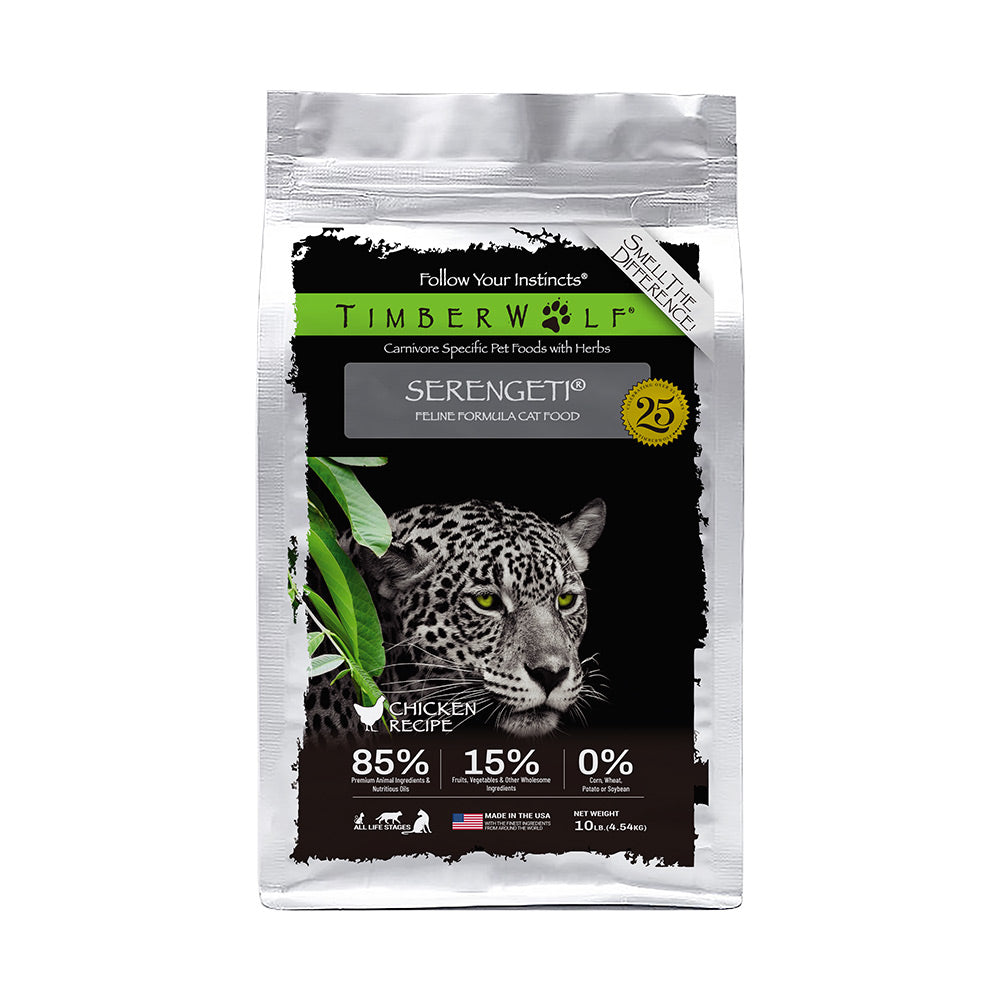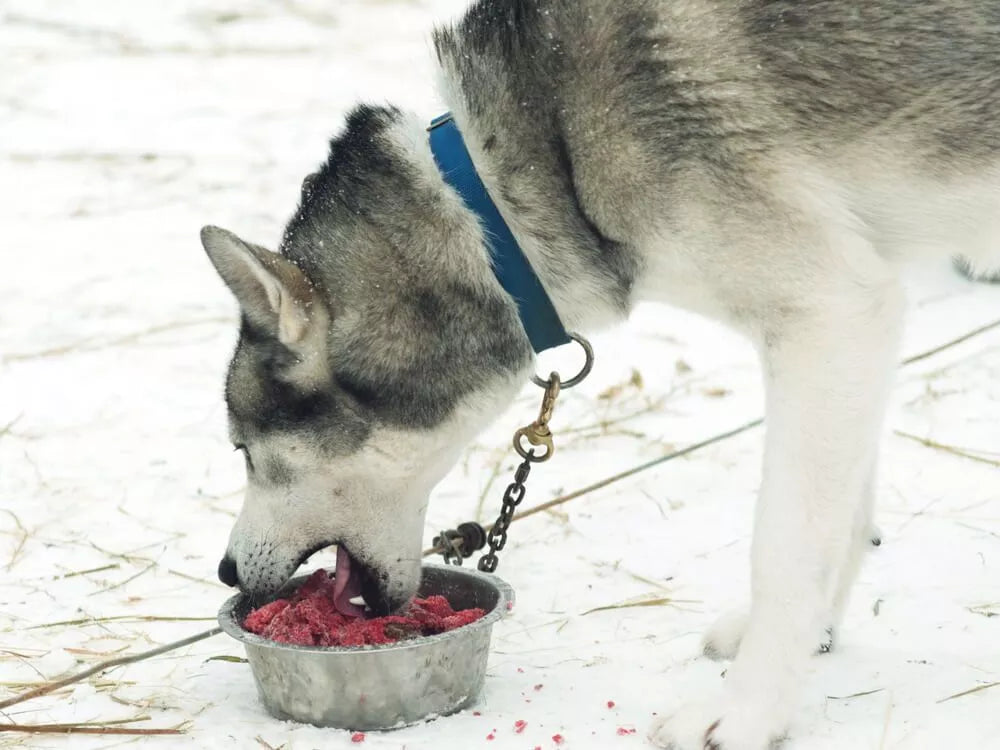
Crude Protein in Dog Food: Does Your Dog Need It?
Knowing what, or how, to feed our dogs can be confusing with so many choices on the market. We want to do our best for our canine companions and ensure they are getting a well-balanced diet to keep them active and healthy. Protein is an essential nutrient for dogs to keep them healthy, provide energy, support development, and growth, and maintain a healthy immune system. But how is protein measured in food? What is crude protein? And how much protein do dogs need in their diet? Let’s find out!
What is Crude Protein?

Dog food labels must display the percentage of crude protein, crude fat, crude fiber, and water.
Crude protein is a measure of how much protein is in food, based on laboratory tests that analyze the food’s chemical composition. When you look for protein content on a pet food’s nutrition label, the number you see normally refers to crude protein. Crude protein is calculated after measuring the nitrogen content of food. Amino acids are the building blocks used to make protein, and each of these contains nitrogen.
However, other nutrients also contain nitrogen so crude protein may overestimate the protein content of food compared to true protein. ‘True protein’ measurements directly assess the level of protein in food and are more accurate, however, the difference is minimal and unlikely to make a significant impact on choosing which food to feed your dog.
The protein content is displayed on dog food packing in weight (normally grams) and as a percentage of dry matter (DM) i.e., the amount of protein in the whole food once the food has been dried out. Dog food labels must display the percentage of crude protein, crude fat, crude fiber, and water.
Why Do Dogs Need Protein
Dogs are omnivores meaning they eat both animal and plant products in the wild, however, they get most of their dietary protein from meat sources. Protein is essential for a healthy coat and skin, for muscle development, tissue repair, and as an energy source. Protein sources include meat such as chicken, beef, turkey, lamb, duck, and fish. Organs and animal by-products such as heart, liver, kidneys, and lungs are also nutritious sources of animal protein. Some grains and oilseeds, such as soybeans, lentils, and chickpeas are also good protein sources.
How Much Protein Dogs Need

The quality of the protein is just as important as the amount of protein: it needs to be easily digestible to be absorbed and utilized correctly in your dog’s intestines.
The amount of protein your dog needs depends on his or her lifestyle and life stage. Puppies and young, growing dogs require more protein than adult dogs. Bitches that are pregnant or lactating also require more protein in their diet. Elderly dogs and those with certain illnesses or conditions often require less dietary protein.
The minimum dietary protein requirement for a growing dog is 18% dry matter, or DM, and 8% DM for an adult dog. It is important to remember that this is based on high-quality proteins and is a minimum amount. The AAFCO (Association of American Feed Control Officials) recommends that growing dogs should have a diet with at least 22% DM protein and 18% DM protein for maintenance. The maximum amount of protein for any life stage should not exceed 30% DM.
However, the quality of the protein is just as important as the amount of protein the food contains. The protein needs to be easily digestible to be absorbed and utilized correctly in your dog’s intestines.
What is a High-Quality Protein?
The quality of protein sources can vary. High-quality protein is also referred to as a complete protein. They are highly digestible and contain all the necessary amino acids that are considered essential. Dogs can create some amino acids themselves; the rest need to come from their diet. Some amino acids can be obtained from plant sources, whereas others are only found in animal sources. Examples of high-quality proteins include fish, meat, eggs, quinoa, and soy.
High Protein Diets – Are they Good for Dogs?

High-quality protein sources are essential to keep your dog healthy, however, dogs can only use a certain amount of the protein that is digested and absorbed.
High-protein dog foods are increasing in popularity, especially with dog owners who choose to feed raw meat-based diets. There is a perception that high protein diets are healthier or better-quality foods for dogs. However, this is not necessarily true. High-quality protein sources are essential to keep your dog healthy, however, dogs can only use a certain amount of the protein that is digested and absorbed. Excess protein in the diet is broken down and used as energy or stored as fat. The kidneys remove the by-products of protein breakdown, and these get excreted in the urine.
High protein foods contain 30-37% crude protein. Very active dogs, such as working dogs that require large amounts of energy may benefit from high protein diets to provide energy and facilitate muscle growth and repair. For less active dogs, a high protein diet may result in weight gain.
Dogs with underlying health problems, such as chronic kidney disease require much lower levels of dietary protein. A high protein diet can be detrimental to these dogs. Whilst the chance of illness, and particularly kidney diseases, increases with older age, feeding a restricted protein diet is not recommended for all senior dogs. Older dogs still need adequate dietary protein to maintain muscle mass and support a healthy immune system. If your dog has been diagnosed with kidney disease or other health problems and you are unsure how much dietary protein they need, then consult with your veterinarian or a qualified veterinary nutritionist.
Summary
Protein is only one component of pet food that provides complete nutrition for your dog. The healthiest dog foods balance high-quality, digestible protein sources with fiber, fats, fruit, vegetables, and vitamins and minerals. Be sure to check the labeling of dog food carefully and understand the ingredients when choosing the best food for your canine companion. Protein is an important ingredient, but protein alone can’t provide everything that is needed to ensure your dog stays happy, healthy, and active.
FAQs:
Is crude protein good in dog food?
Yes! Protein is an essential nutrient all dogs need to survive. Protein is made up of amino acids that are essential for tissue growth and repair, providing energy and maintaining muscle.
How much crude protein is too much in dog food?
High protein diets are those with more than 30% protein. Some dogs tolerate this well, however, others will convert the excess energy into fat leading to weight gain. Dogs with certain underlying health problems, such as kidney disease or some bladder problems require a protein-restricted diet.
What does crude protein mean?
Crude protein is an estimate of the amount of protein in food calculated by measuring the amount of nitrogen. Amino acids, the building blocks of protein, all contain nitrogen. However, nitrogen is also found in other non-protein food sources so it may overestimate the amount of true protein. The protein content on nutrition labels is most commonly displayed as crude protein, not true protein.
What is a good amount of protein in dog food?
This depends on the individual dog. According to the American Kennel Club, an optimal level of protein for dogs is about 20 -22 % crude protein. Very active dogs, such as working dogs or heavily muscles breeds may require more protein. Young, growing dogs or pregnant bitches may also need more energy from their diet in the form of protein.
- Choosing a selection results in a full page refresh.
